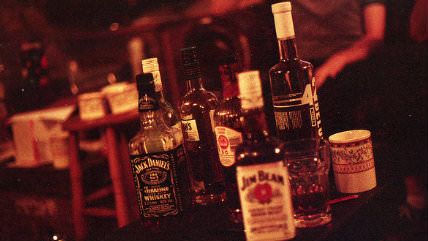Celebrating Repeal Day Under the Vestiges of Prohibition
The era of small-"p" prohibition has persisted for more than eight decades since the repeal of the 18th Amendment.

Today marks the 81st anniversary of the ratification of the 21st Amendment to the U.S. Constitution, which ended alcohol Prohibition in the United States. Repeal Day, as the date is known to celebrants, recognizes the end of an awful 13-period that came into being after passage of the 18th Amendment to the Constitution.
The term "awful" is no overstatement.
"While proponents of Prohibition argued that the amendment would be more effective if enforcement were increased, respect for the law diminished and drunkenness, crime, and resentment towards the federal government ran rampant," notes the official Repeal Day website, which celebrates this date as "a return to the rich traditions of craft fermentation and distillation, the legitimacy of the American bartender as a contributor to the culinary arts, and the responsible enjoyment of alcohol as a sacred social custom."
Though most people alive today never experienced the various woes of alcohol Prohibition, the sad fact is that many unfortunate vestiges of the era remain in place today. This era of small-"p" prohibition has persisted for more than eight decades since the repeal of the 18th Amendment.
Examples of tight alcohol rules in the post-Prohibition ebra are found around the country, and at all levels of government. Such rules include outright bans—clear vestiges of Prohibition. There are at least 200 "dry" counties in America today in which alcohol is banned (or, in the case of "moist" counties, severely restricted).
Massachusetts bans "happy hour" alcohol specials. Utah's so-called "Zion curtain" prohibits many bartenders from pouring drinks in view of consumers. As recently as last year, it was illegal to brew your own beer in two states. The federal government banned Four Loko in 2010 and—just this year—Maryland banned Everclear. And the federal government continues to prohibit home distillation of spirits from absinthe to bourbon to vodka.
That's a long list of inexcusable bans. But the news isn't all dire. Ongoing deregulation efforts since the late 1970s have slowly given hope to producers and consumers alike.
The year 1979 saw the network television debut of the Dukes of Hazzard, a show celebrating the exploits of a pair of modern-day, semi-reformed moonshiners. Less than a week after the show first aired, a bill signed by Pres. Jimmy Carter that deregulated home brewing of beer—which had been illegal since Prohibition—took effect.
With the ban lifted, home brewers began to re-diversify America's beer industry, kickstarting what has become nothing less than a craft beer revolution in America.
Craft beer sales have boomed in recent years. In 1990, less than one percent of sales were attributed to small producers. Today, nearly 8 percent of domestic beer sales are attributable to craft beer, which now represents almost the same percentage of overall beer sales in this country as imported beer sales did in the late 1990s. This has helped small brewers proliferate. Recent Census Bureau data show that the number of breweries in America doubled between 2007 and 2012.
The rise of craft beer and decline in market share of big producers "is actually a story of the triumph of a liberalized marketplace, of decentralization and deregulation," writes Kyle Smith in a recent New York Post column.
But craft beer's growth at the expense of large brewers only tells part of the story. After all, craft beer still accounts for a small percentage of overall beer sales.
It's light beers made by large brewers, including the national bestseller, Bud Light, that have supplanted old favorites like Budweiser (which is now merely the Prince of Beers). Six of the top seven beers in America are mass-produced light beers.
The beer industry is a huge economic engine. Data from the Beer Institute, which represents America's larger brewers, show America's 2,800 brewers lead a $246.5 billion industry that's responsible for more than 2 million jobs, $79 billion in annual worker wages and benefits, and the purchase of more than $850 million each year in raw agricultural materials from U.S. farmers.
But high state and federal taxes continue depress the market for craft and mainstream beer alike.
The Beer Institute likes to note that beer is "4.6 percent alcohol by volume, 40 percent tax." Two bills in Congress recently sought to reduce taxes paid by brewers, costs that are ultimately passed on to consumers.
"In human history," alcohol and Prohibition historian Garrett C. Peck told The New York Times recently, "there has never been a better time to be a drinker."
That may be true. But for every story of deregulation—such as the successes that recent deregulation of spirits has fostered—there are alarming examples of backsliding.
I think there are three simple premises that—if embraced by federal, state, and local lawmakers—could improve the climate Peck cites even more.
- Deregulation has brought great benefits. But more needs to be done.
- Bans and strict rules don't benefit consumers.
- Alcohol producers should be subject to the same low taxes, regardless of the type of alcohol beverage or size of the producer.
Until lawmakers embrace these premises, the awful vestiges of Prohibition will persist. And clinking glasses on Repeal Day—while worthwhile—will continue to make for a somewhat dissatisfying toast.
Show Comments (54)